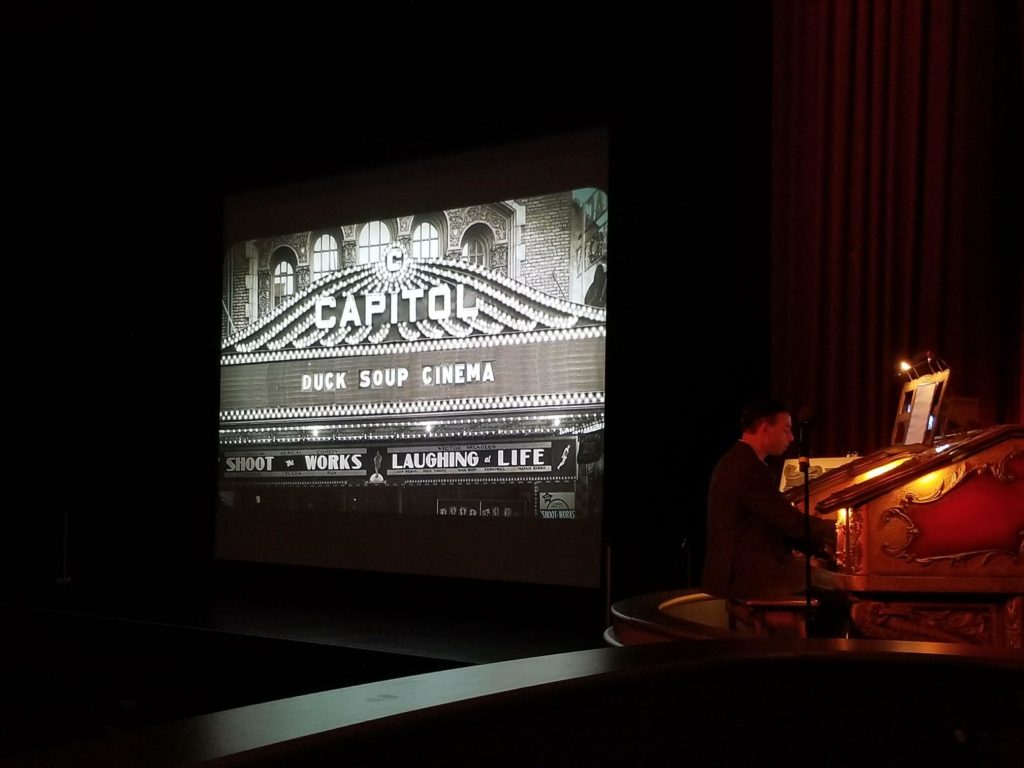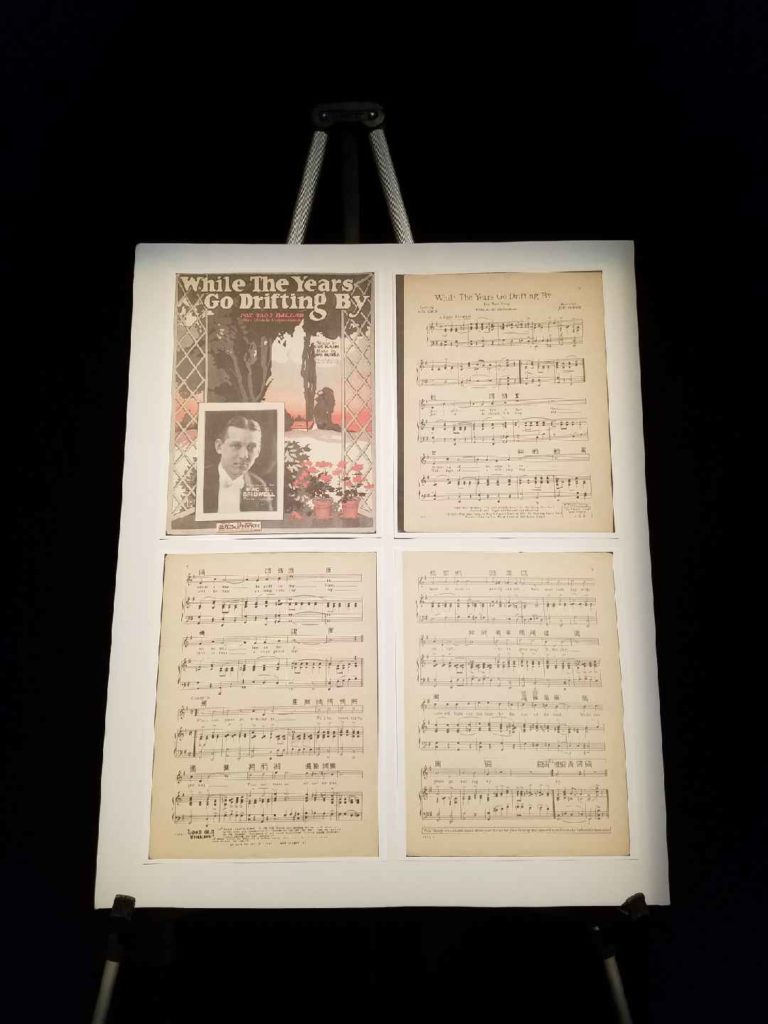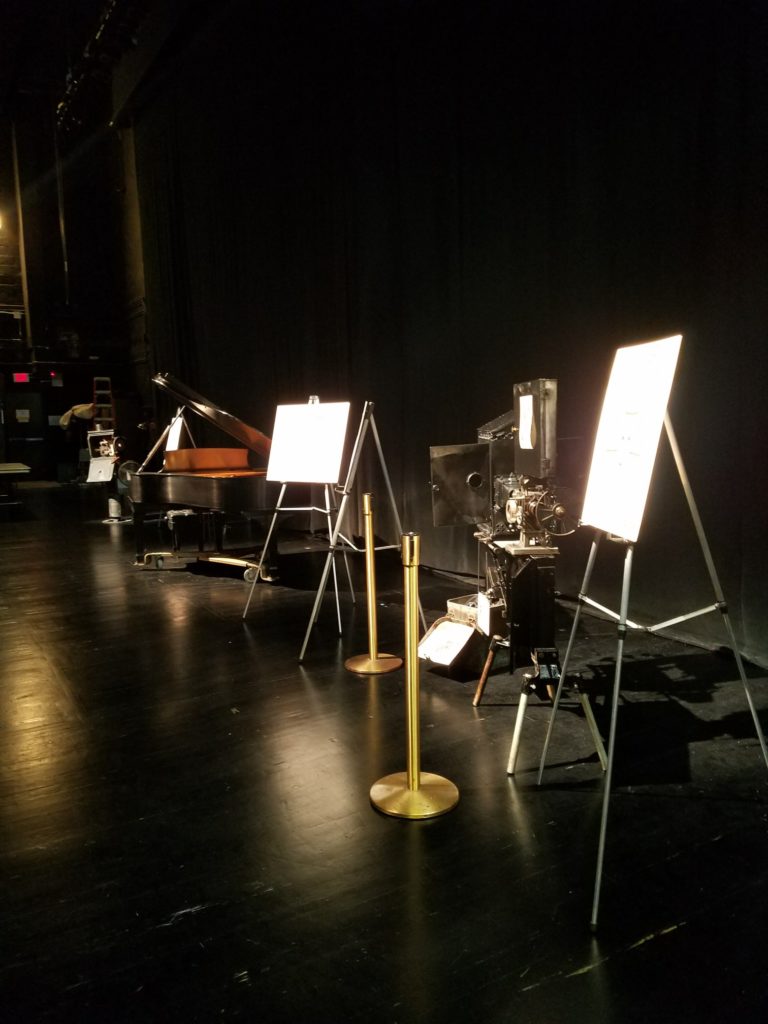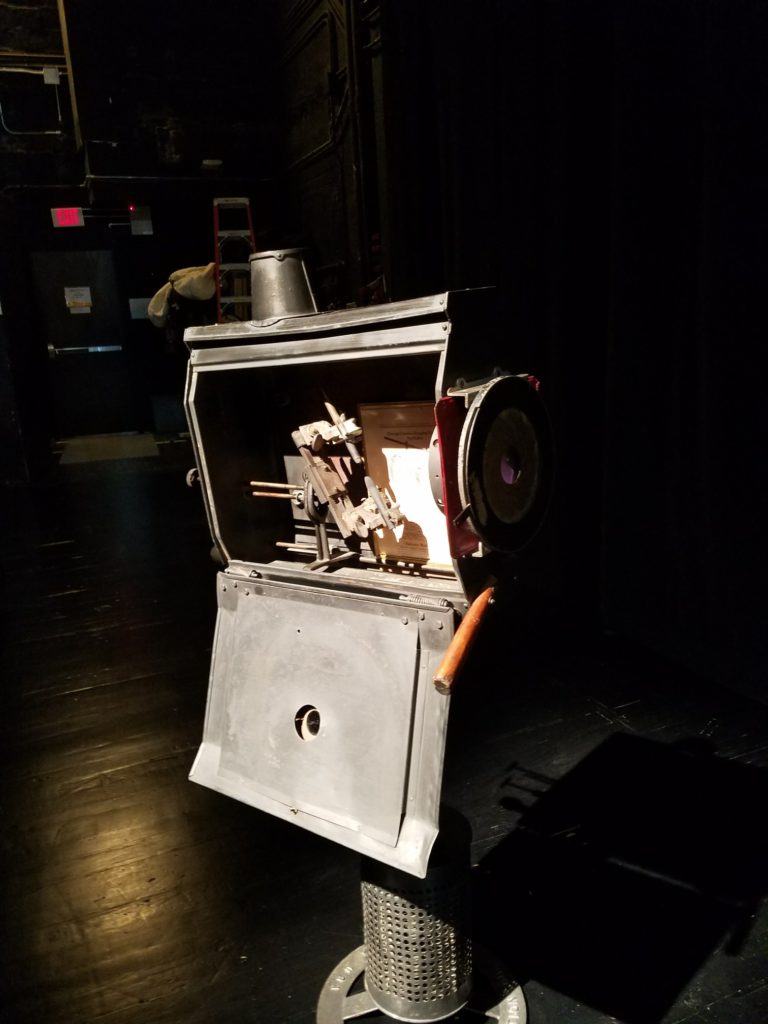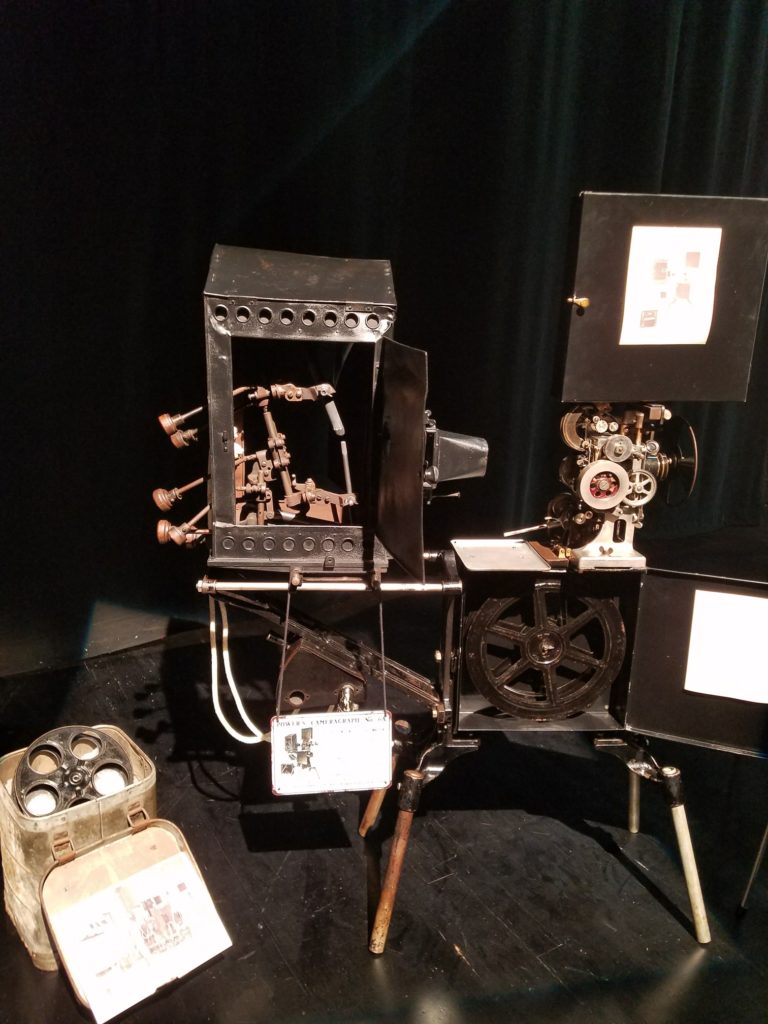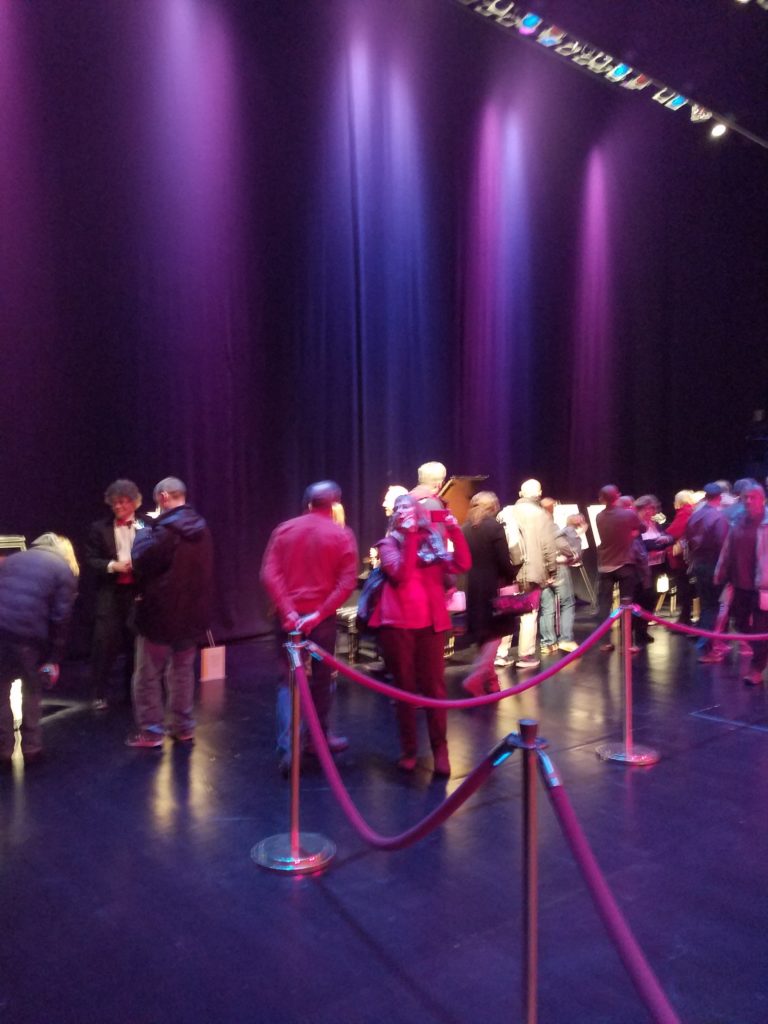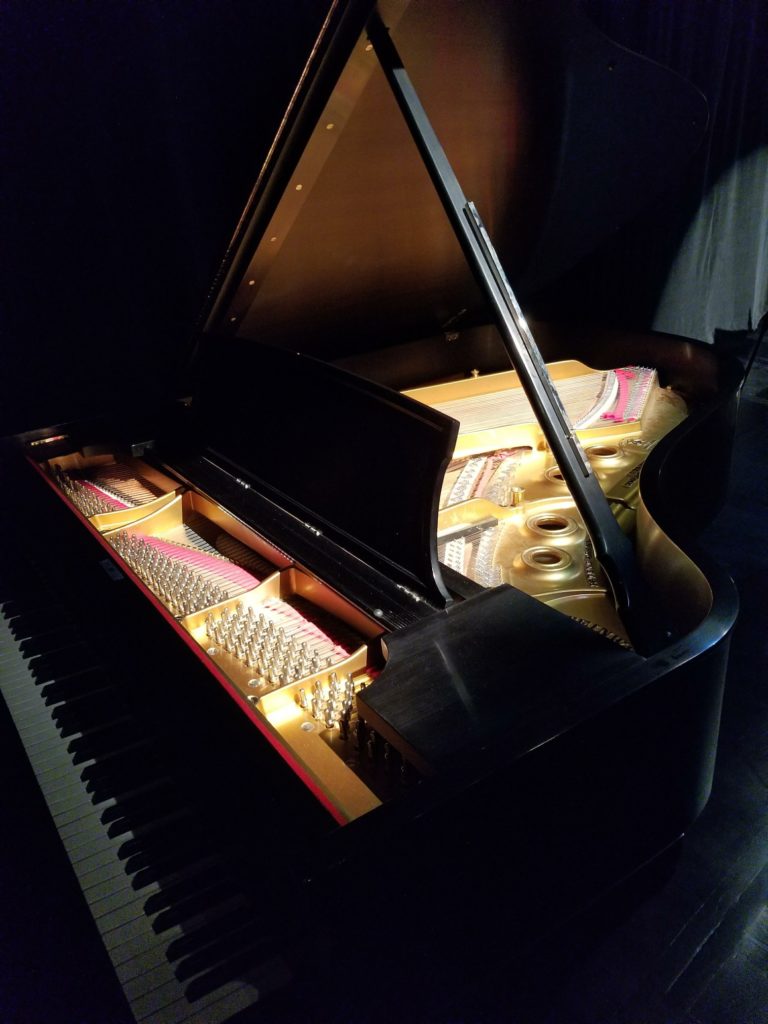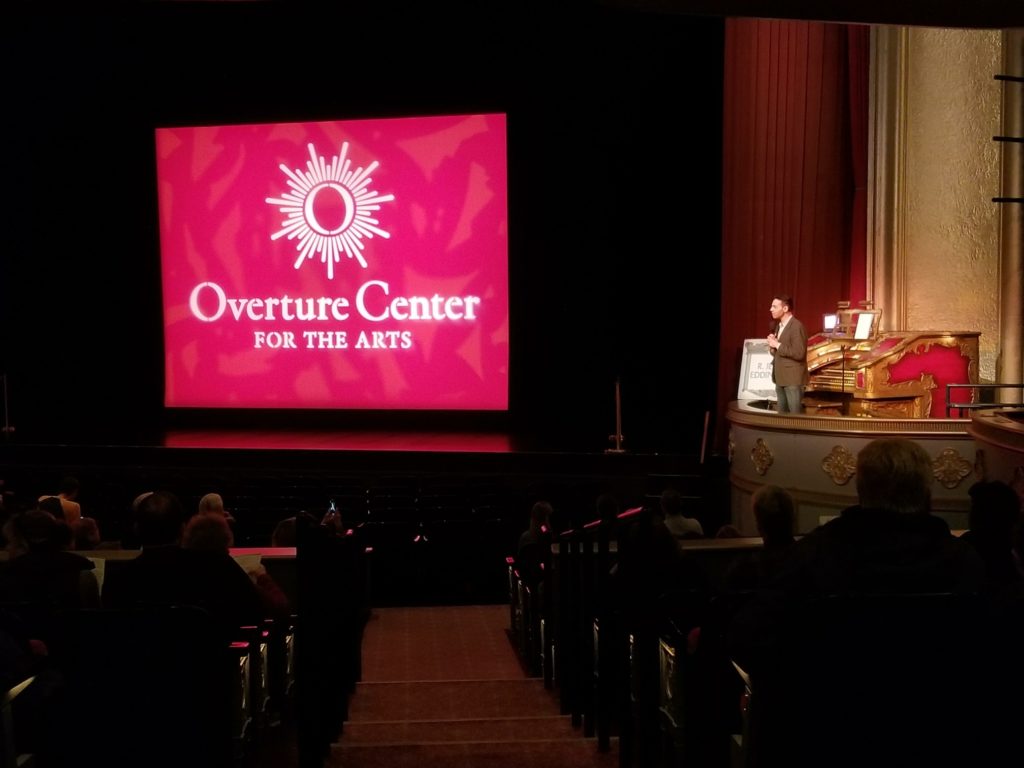Organ, Silent Short, And Tour Celebrate Overture Center’s Historic Capitol Theater
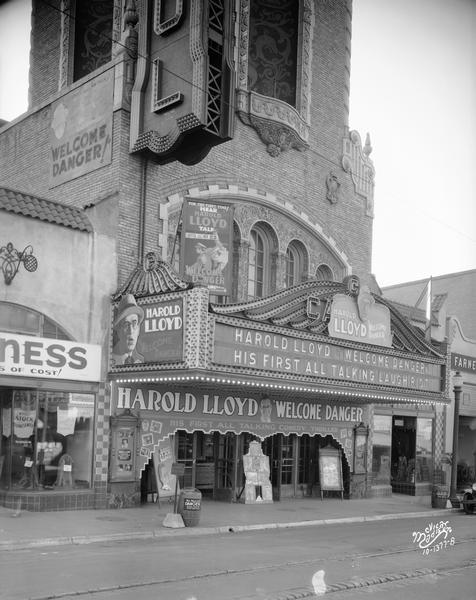
Capitol Theater exterior, early 1930s
On January 21st, 1928, Madison, Wisconsin’s Capitol Theater opened its doors wide, a downtown audience streaming into its gleaming white marble lobby for the first time. Ascending wraparound stairs to the balcony or lead by brass-buttoned ushers to seats below, Capitol’s first audience was greeted by the theater’s recently-installed, 3-manual Grand Barton Organ rising up from the orchestra pit, popular selections from that year’s Hit Parade quickly thundering forth: “Nagasaki”, “I Wanna Be Loved By You”, “Let’s Misbehave”. Sitting expectantly through a program of choral groups, comic monologues, and dance routines, the house lights at long last dimmed their lowest, the mechanical whir of the projector revved up, and the First National Pictures logo rippled through the darkness; comedienne Colleen Moore lighting up the newly-opened theater with her latest screen whimsy, Her Wild Oat.
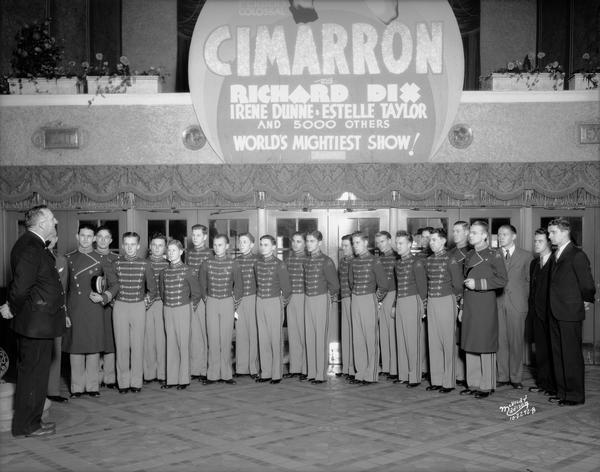
Capitol Theater lobby, early 1930s

screen shot from HER WILD OAT (1927); the first film to be shown at Capitol Theater on January 21st, 1928
This past Sunday, January 21st, 2018, saw Capitol Theater again opening its doors, exactly 90 years later, for a free event featuring a nearly 100-year-old film short and, following this special presentation, a self-guided tour of the organ, stage, backstage, and even a second-floor view of the organ’s pipes reaching to the theater ceiling and beyond. This behind-the-scenes look at a theater showing movies for the greater part of a century, along with its impressive instrument that is one of the few in the country still in its original installation, was observed by old and young attendees alike in three showings between noon and 5PM, offering a rare opportunity to celebrate not only local history but also the history of popular arts in similar theaters across the country. Many smaller theaters and theater palaces alike have come and gone over the past 90 years, but only a handful are still open and operating under the purpose for which they were originally designed.

Grand Barton Organ
Fulfilling that purpose, organist Jelani Eddington returned to the Grand Barton, after accompanying earlier showings of Duck Soup Cinema this season for Harold Lloyd’s The Freshman and its special presentation of the pioneering African-American production of The Flying Ace, giving yet another spirited performance in the spirit of the silent movie era. Opening with a medley of tunes from 90 years ago, some of the titles which are listed above, Eddington introduced the event with a speech about the Capitol’s 1928 opening, the many uses of its organ, and the theater-going experience of the 1920s. Preceding a special showing of a vintage comedy short from 1919, Eddington provided accompaniment, from his own score, for a promotional short from Overture Center of Capitol’s Duck Soup Cinema, inventively made in the style of a silent movie and shot on locations nearby, outside and in the Capitol Theater last Fall. (The short’s “bicycle bandit” revealed as the screen event’s organ accompanist was especially hilarious.)
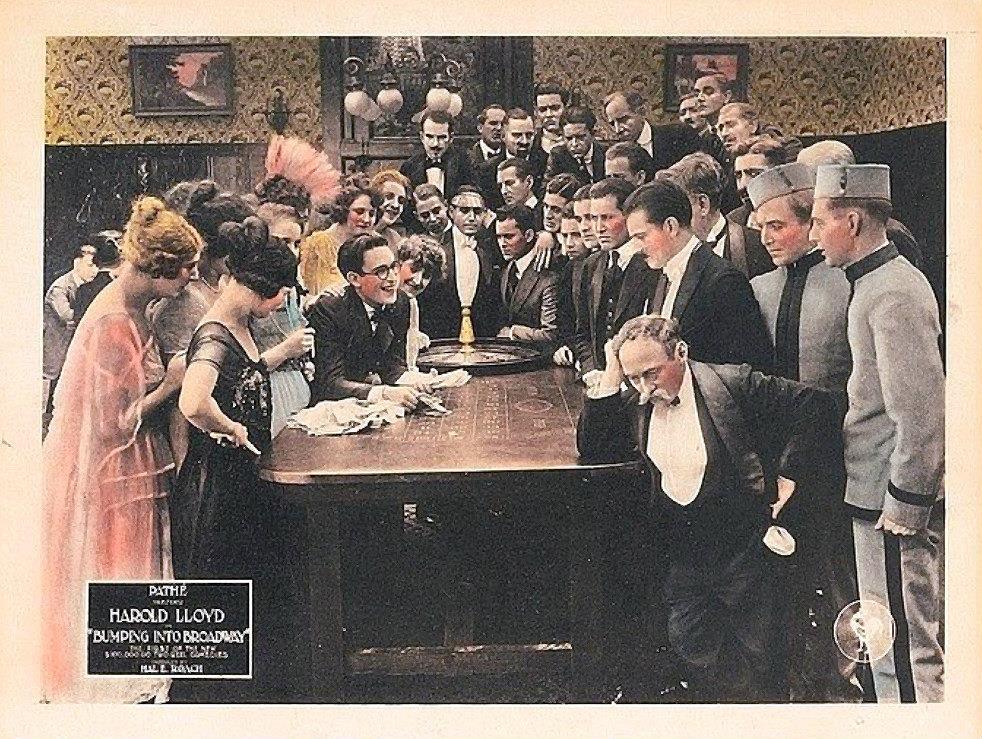
The main event as far as any film fan is concerned was of course the short itself, and the two-reel comedy chosen to represent a near-century of movie- and theater-going, appropriately, was Harold Lloyd and first female co-star Bebe Daniels in 1919’s Bumping into Broadway. Earnest and plucky, with enough inventiveness to overcome any comic difficulty, Lloyd’s famous “glasses” persona, in the first of his longer-length film appearances with his trademark character, contends with an unforgiving landlady and her violent bouncer at his tenement boarding house, a Broadway musical revue and its imperious stage manager (Snub Pollard), and finally a nightsticks-waving police raid on an afterhours, illegal gambling den called the Sky Limit Club; all while hilariously vying for the ever-wavering affections of The Girl (Daniels). Organist Eddington’s early Jazz-like score, of his own composition again, emphasized the energetic leaps, bounds, falls, and chases of the then 25-year-old comedian stretching his art towards feature length.
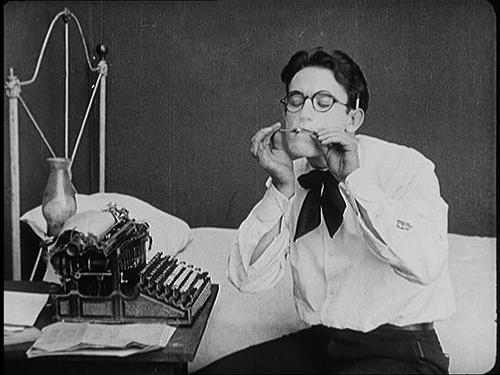
would-be musical theater scribe Harold Lloyd, with pre-IT apparatus, in 1919’s BUMPING INTO BROADWAY
Immediately following the showing, attendees were invited for a closer inspection of the organ and backstage area, theater personnel and volunteers giving wondrously of their time and expertise to explain the behind-the-scenes workings of the theater on its 90th anniversary. Onstage and on-display, 100-year-old lighting equipment, the theater’s original grand piano, and a collector’s restored, hand-cranked movie projector – pre-dating mechanized projectors, which would not be widely manufactured until the 1920’s – all provided fascinating historical context for the film just viewed. Equally fascinating was a rare look, on the landing between the stage and balcony levels, of the Grand Barton’s inner workings, with its vast array of pipes of extraordinarily varying size – from the scaled length and width of straws to massive fixtures of several feet – through which air travels at enormous pressure.
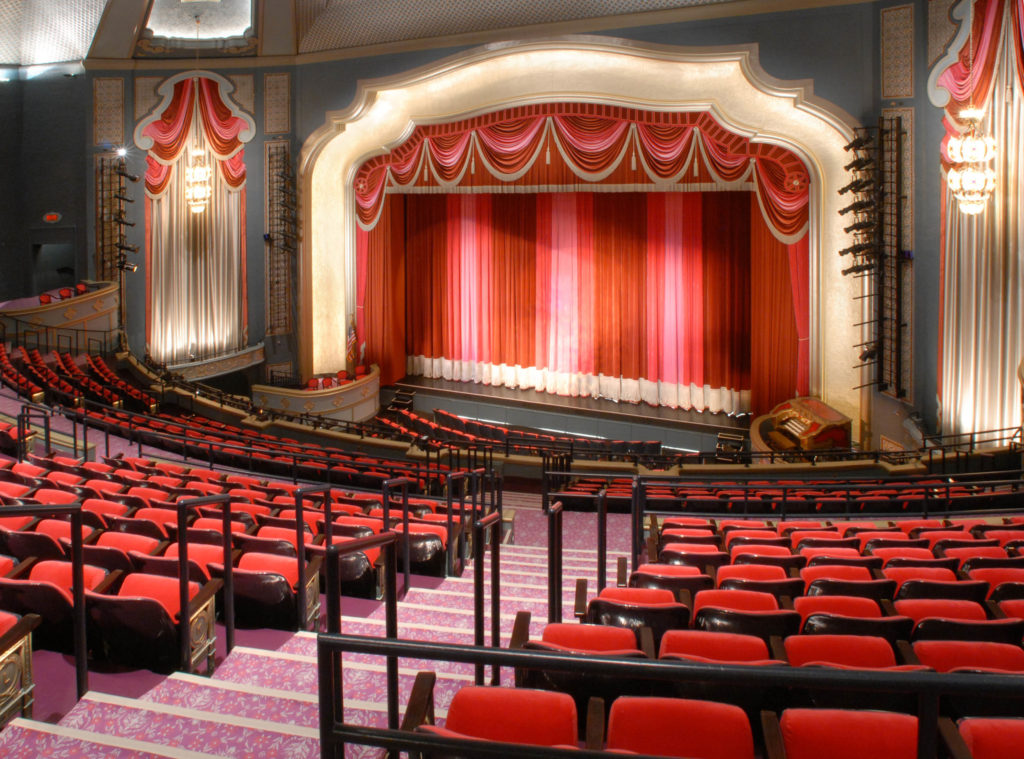
Capitol Theater interior
For the past 90 years, the Grand Barton has maintained a deep-set, vibratory sound from its multi-story, narrow chambers that now generations of Capitol Theater audiences have thrilled to. Silent movie fans will have several other opportunities to see and hear the organ in action later this year as Duck Soup Cinema continues February 17th, with screen siren Clara Bow in 1926’s Mantrap; March 17th, with a special showing of director F.W. Murnau’s seminal 1927 masterpiece Sunrise; and April 7th, with the immortal Buster Keaton in 1924’s Sherlock Jr., but in order to ensure that the Grand Barton itself never goes silent, please consider supporting its legacy, and the 90-year legacy of its venue, through continued interest in and attendance at unique events such as this. It’s still the best way to keep entertainment’s past alive, along with our strong connection to it.
Program coordinator Rudy Lienau graciously provided the following wonderful shots of Capitol’s 90th anniversary event. Credit and a hearty thank-you goes to him and everyone else who made the event possible:
